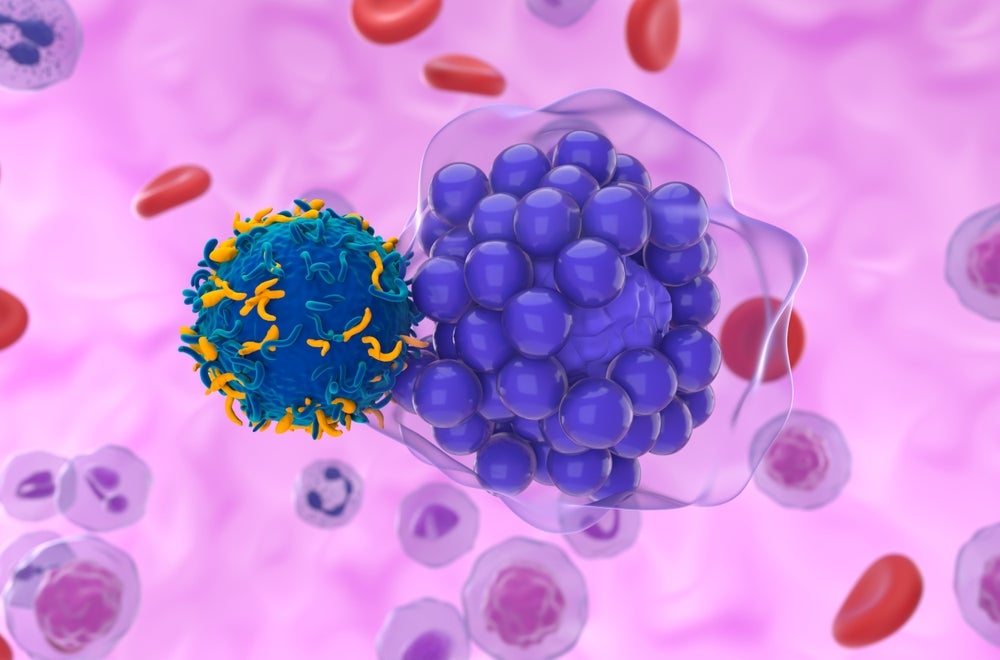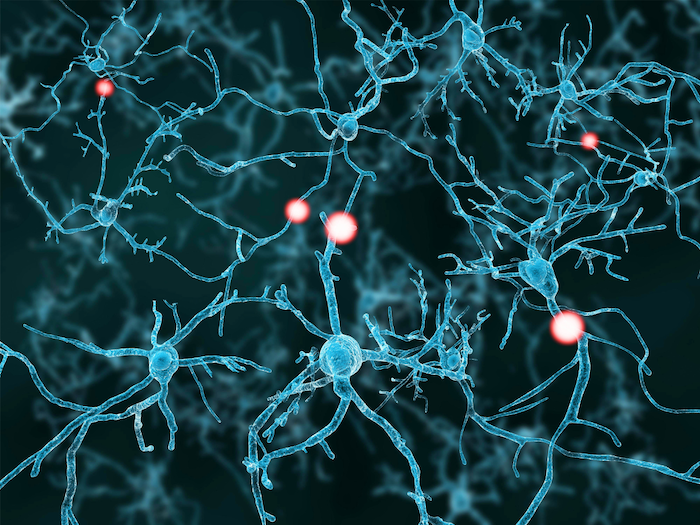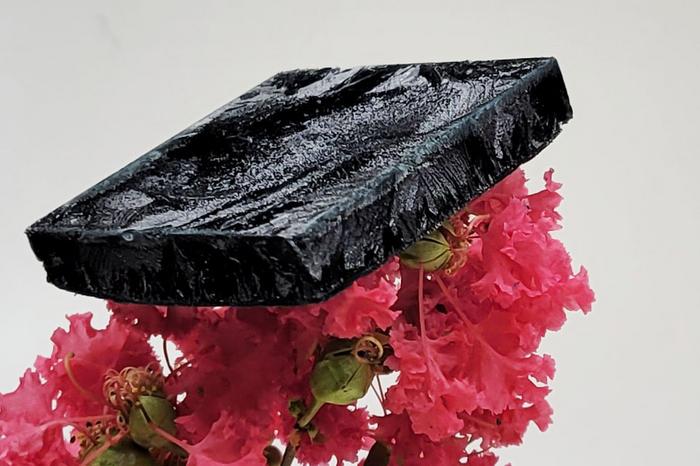Magnetic Switch Captures Quantum Information Carriers in One Dimension
A groundbreaking material has emerged in the realm of quantum physics, demonstrating a remarkable potential to enhance magnetic switching capabilities and revolutionize information technology. Researchers from the University of Regensburg and the University of Michigan have meticulously studied a wonder material known as chromium sulfide bromide, unveiling its unique ability to support the encoding of […]


A groundbreaking material has emerged in the realm of quantum physics, demonstrating a remarkable potential to enhance magnetic switching capabilities and revolutionize information technology. Researchers from the University of Regensburg and the University of Michigan have meticulously studied a wonder material known as chromium sulfide bromide, unveiling its unique ability to support the encoding of quantum information in multiple physical forms including electric charge, photons, magnetism, and phonons. Their work opens new pathways for developments in quantum computing and sensing, which could have far-reaching implications across various fields, from telecommunications to advanced computing architectures.
At the heart of their findings lies the intriguing behavior of excitons, quasiparticles consisting of an electron and a hole bound together in a state of energy. Earlier investigations hinted at the elegant confinement of excitons in this material, but the latest research provides a comprehensive theoretical and experimental framework that elucidates how the material’s magnetic order critically influences this confinement. The researchers propose that magnetic order serves not merely as a passive quality, but as an active mechanism to influence and modulate the state of excitons, thereby determining how these entities can interact, transform, and ultimately encode information.
The particular appeal of chromium sulfide bromide arises from its astounding capacity to govern information transfer through various means. It can encode data in the form of electric charge, manipulate light through photonic channels, harness electron spins for computational prowess, and utilize phonons for effective transmission of information. Mackillo Kira, a leading researcher from the University of Michigan, envisions a future where these properties can be synergized to create all-encompassing quantum devices. In such systems, photons serve to transfer information, electron interactions facilitate processing, magnetism stores valuable data, and phonons provide spatial and temporal modulation of information flow. This paradigm shift could redefine our understanding of how information technology evolves in the quantum realm.
As the research delves deeper, it elucidates how excitons can serve as a vehicle for quantum information storage and processing. An exciton forms under specific conditions when an electron is energized away from its “ground” state, producing a “hole” that remains in its wake. The coupling of these two entities renders excitons a significant focus for researchers aiming to control quantum states. The interplay between excitons and the unique magnetic properties of chromium sulfide bromide allows researchers to finely tune how excitons are confined, leading to new discoveries about their collective behavior and interactions.
Notably, the research sheds light on the material’s magnetic characteristics, specifically its manifestation as an antiferromagnetic structure in low-temperature conditions. Below 132 Kelvin, the spins of the electrons within the material align antiferromagnetically, enabling excitons to remain confined to atomically thin layers. The switching of magnetic fields from one layer to the next leads to a configuration where excitons are offer one-dimensional confinement in a single layer. Such topological characteristics enhance the robustness of the quantum information they carry, significantly increasing their lifespan and resilience against disruptive collisions.
Above the critical temperature of 132 Kelvin, the situation transforms dramatically as the material loses its magnetized state. The heat-induced chaos allows electron spins to align randomly, causing the excitons to escape their layered confinement and expand into three-dimensional behaviors. This metamorphosis introduces intricate dynamics, where excitons become more mobile, further complicating their interaction landscape and increasing their likelihood of collisions—an adversarial scenario for quantum information retention. This duality of states, dependent on temperature and magnetic alignment, creates a fertile ground for innovative research exploration.
With experimental evidence in hand, the researchers embarked on a meticulous investigation into the energy landscape of excitons within chromium sulfide bromide. Employing pulses of infrared light on the material, they were able to successfully induce excitons while simultaneously studying their energy shifts. This fascinating process yielded two distinct variations of excitons with unexpected energy levels—a phenomenon known as fine structure. Such findings not only confirm the interplay between excitons and magnetic order but also pave the way for further refinements in quantum information processing strategies.
Their use of space-variant probing techniques divulged how excitons behave under varying magnetic conditions, revealing their affinity for one-dimensional confinement. This directional dependency emphasizes the multifaceted interactions at play, opening avenues for applications that rely on precise control over exciton states. Researchers hope that by exploiting this switchable magnetic order, they may be able to create mechanisms for rapidly converting information stored in one form (like photons) to another (such as electron spins), enhancing the speed and efficiency of quantum devices.
The theoretical groundwork accompanying these experimental results was developed through extensive quantum many-body calculations. These sophisticated mathematical models not only predicted the substantial fine-structure splitting observed in the material but also traced the transitions between different exciton states as the magnetic order toggled on and off. This interplay illustrates how varying confinement impacts exciton collision dynamics, serving as critical insights for the development of next-generation nanomaterials that manipulate quantum states.
As researchers probe further into the potential for manipulating excitonic states, a tantalizing question looms large: can excitons, manifested through charge separation, be converted into magnetic excitations linked to electron spins? Such a breakthrough could empower the seamless transition of quantum information across diverse mediums, effectively bridging the gaps between photons, excitons, and electron spins.
This promising research underlines a burgeoning field that stands on the threshold of a new information age. Funded by prominent bodies such as the German Research Foundation and the National Science Foundation, the implications of this work are already generating excitement within the scientific community, heralding the possibility of groundbreaking technologies that integrate quantum principles into everyday applications.
This collective effort has benefited from international collaboration, including valuable contributions from researchers associated with the University of Chemistry and Technology Prague and Dresden University of Technology in Germany. By sharing insights and expertise, these institutions are united by a common goal: advancing our capabilities in quantum information science and pushing the boundaries of what is technologically possible.
In summary, the discovery of the magnetic properties of chromium sulfide bromide and its ability to influence exciton behavior could redefine quantum computing and information processing. As researchers continue to unravel the intricacies of this “miracle material,” we may very well witness a revolutionary transformation in how we encode, store, and manipulate information at the quantum level. The realm of quantum mechanics continues to merge with practical applications, promising to generate devices that could one day seamlessly integrate various forms of quantum information, significantly enhancing the efficacy and speed of technological systems.
Subject of Research: Chromium Sulfide Bromide as a Quantum “Miracle Material”
Article Title: Magnetic Switching and Quantum Information Encoding in Chromium Sulfide Bromide
News Publication Date: [Insert Date Here]
Web References:
References: DOI: 10.1038/s41563-025-02120-1
Image Credits: [Insert Here]
Keywords
Quantum states, materials science, quantum information technology, excitons, magnetic order, chromium sulfide bromide, quantum computing, antiferromagnetism, many-body calculations.
Tags: active magnetic order influenceadvanced computing architectureschromium sulfide bromideexcitons in quantum physicsinformation technology innovationsmagnetic switching capabilitiesmaterial science breakthroughsquantum computing advancementsquantum information carriersquantum sensing developmentsquasiparticles behaviortelecommunications applications
What's Your Reaction?

































